Explore effective yoga poses to help boost fertility. Enhance your reproductive health through yoga.
Table of Contents
The quest to understand the complex relationship between lifestyle factors and fertility has led to the investigation of various practices that may potentially improve reproductive health. Yoga, an ancient Indian practice, has gained popularity for its holistic approach to health, which includes physical postures, breathing exercises, meditation, and mindfulness.
The importance of examining the possibility that yoga can boost fertility is growing as infertility continues to affect many couples around the world. This article conducts an extensive investigation into the mechanisms, benefits, and evidence for including yoga in a fertility increase plan.

Fertility and Its Complexities
A complex interplay of physiological, psychological, and environmental factors plays a role in the dynamics of fertility. Despite the fact that conception is a natural process, infertility can be caused by a variety of conditions, including hormonal imbalances, structural abnormalities, illnesses, stress, and lifestyle choices. The search for complementary and alternative methods to support fertility is growing in popularity as more couples struggle to conceive.
Boost Fertility Through Yoga: Managing Stress for Reproductive Well-being
Stress, whether it has psychological or physical causes, has a significant impact on reproductive health. Chronic stress can cause the hypothalamic-pituitary-adrenal (HPA) axis, an essential part of the body’s stress response, to become dysregulated. The balance of hormones, including those involved in reproduction, such as estrogen and progesterone, is subsequently disrupted. Such imbalances may adversely affect ovulation and general reproductive health.
Yoga is well known for its stress-relieving properties because it has the ability to activate the parasympathetic nervous system, which promotes relaxation and lowers the release of stress hormones like cortisol. Combining regular yoga practice with mindfulness exercises may help you control your stress levels and potentially lessen the negative effects it has on your fertility.

Does yoga increase fertility?
The impact of yoga on fertility has been studied and discussed by researchers and experts. While there is no universal agreement, some studies suggest that practicing yoga may boost fertility in some people. However, it’s important to note that yoga may not be a cure-all for fertility problems, and individual results may vary.
Enhancing Reproductive Health Through Yoga
Blood circulation is crucial for reproductive health because it transports nutrients, oxygen, and hormones to the reproductive organs. Stretching, relaxation, and mindful breathing techniques in yoga postures can increase blood circulation to the pelvic area. Poses like “Baddha Konasana” (Butterfly Pose) and “Supta Baddha Konasana” (Reclining Bound Angle Pose) target the pelvic area, potentially increasing blood flow to the ovaries and uterus.
Yoga has the potential to boost fertility in several ways:
1. Empowering the Pelvic Floor
The reproductive organs need to be supported and kept in proper working order, which is made possible by the pelvic floor muscles’ strength. Incontinence and decreased sexual satisfaction can result from weak pelvic floor muscles, among other problems. The pelvic floor has been specifically targeted by yoga asanas like “Mula Bandha” (Root Lock). By strengthening these muscles, one may improve pelvic alignment and conceivably improve the ovulation environment.
2. The Mind-Body Connection and Its Significance
The mind-body connection is becoming increasingly recognized as a key factor in fertility. Stress, anxiety, and depression can harm reproductive health by interfering with hormonal balance and ovulation. The deep breathing, mindfulness, and meditation practices found in yoga give people the tools they need to control these psychological factors. Yoga’s relaxation response counteracts the body’s stress response, promoting a more peaceful environment for conception.
3. Regulating the Menstrual Cycle through Yoga
Menstrual cycles that are irregular can make it difficult to get pregnant. A more regular menstrual cycle may result from yoga’s potential effects on hormonal regulation, stress reduction, and blood circulation. By establishing a regular menstrual cycle, regular yoga practice may help control ovulation and increase the chance of conception.
4. The Psychological Upliftment Offered by Yoga
Individuals and couples are frequently emotionally drained by infertility, which can result in emotions like frustration, sadness, and anxiety. Yoga places a strong emphasis on mindfulness and meditation, which can benefit mental health. By giving people the tools to deal with the emotional difficulties of infertility and fostering psychological resilience, mindfulness-based practices like meditation and pranayama (breath control) can help people.
Remember that fertility is a complicated topic that can be impacted by a variety of elements, such as age, underlying medical conditions, genetics, and lifestyle. Yoga may have some advantages, but it’s best to think of it as a complementary practice to other healthy lifestyle decisions.
It is advisable to speak with a healthcare provider, preferably a reproductive endocrinologist or fertility specialist if you’re thinking about using yoga to support fertility. Based on your unique requirements and situation, they can offer you individualized advice.
Yoga Poses to Help Boost Fertility
The following yoga poses are thought to Boost fertility:
1. Bhramari Pranayama (Bee Breath)

Bhramari Pranayama entails relaxing in a chair and inhaling deeply. When you exhale, you make a humming noise that sounds like a bee gently buzzing. This relaxing exercise aids in easing facial and head tension. It’s a great technique for relaxation and centering because the vibration of the sound can ease anxiety and calm the mind.
2. Supta Baddha Konasana (Reclining Bound Angle Pose)
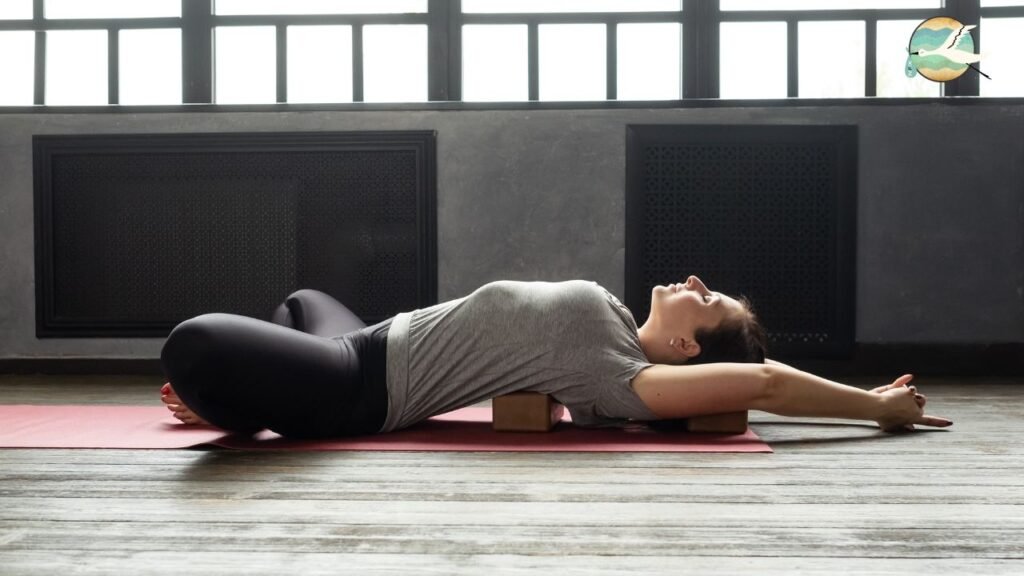
To perform this pose, lie on your back and bring the soles of your feet together. Then, gently separate your knees. By opening the hips and groin region, this stretch brings about a feeling of comfort and flexibility there. It can help people who spend a lot of time sitting down by easing tightness and discomfort in the hips.
3. Paschimottanasana (Seated Forward Bend)

In this seated position, extend your legs out in front of you, fold forward from the hips, and reach for your feet or ankles. This lengthens the spine, stretches the back muscles, and activates the hamstrings. Paschimottanasana is renowned for its capacity to improve digestion as well as its calming effect on the nervous system.
4. Viparita Karani (Legs Up the Wall Pose)
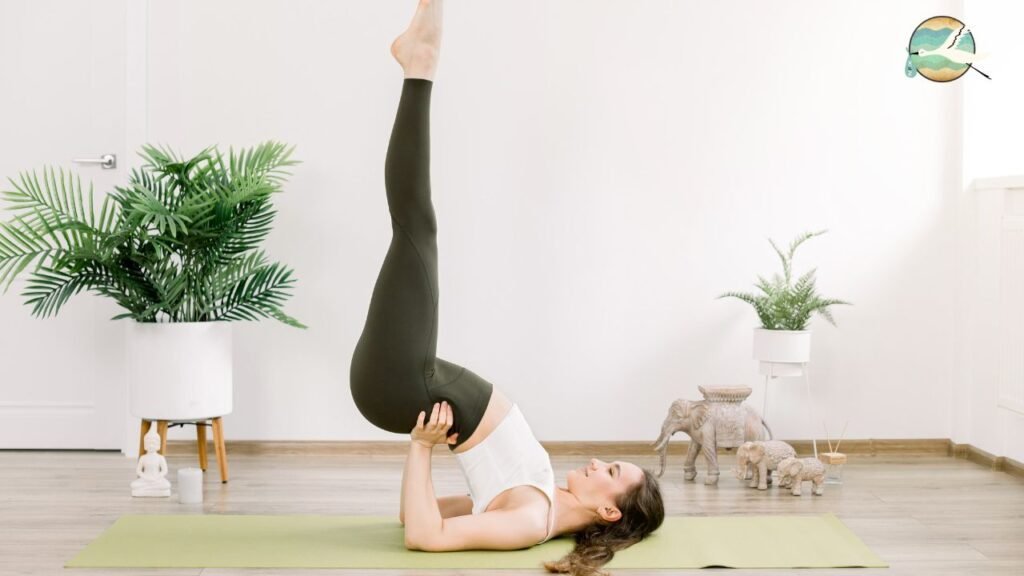
Legs extended up the wall in the shape of an L as you lay on the floor. In addition to encouraging blood flow back to the heart, this gentle inversion also helps to lessen leg swelling. It’s a reviving position that encourages relaxation and can help you feel less worn out.
5. Uttanasana (Standing Forward Bend)

Standing with your feet hip-width apart, bend forward until your shins or the ground are in contact with the ground. This forward bend effectively stretches the hamstrings and eases back tension. It can reduce stress and enhance blood circulation all over the body.
6. Salamba Sarvangasana (Shoulder Stand)
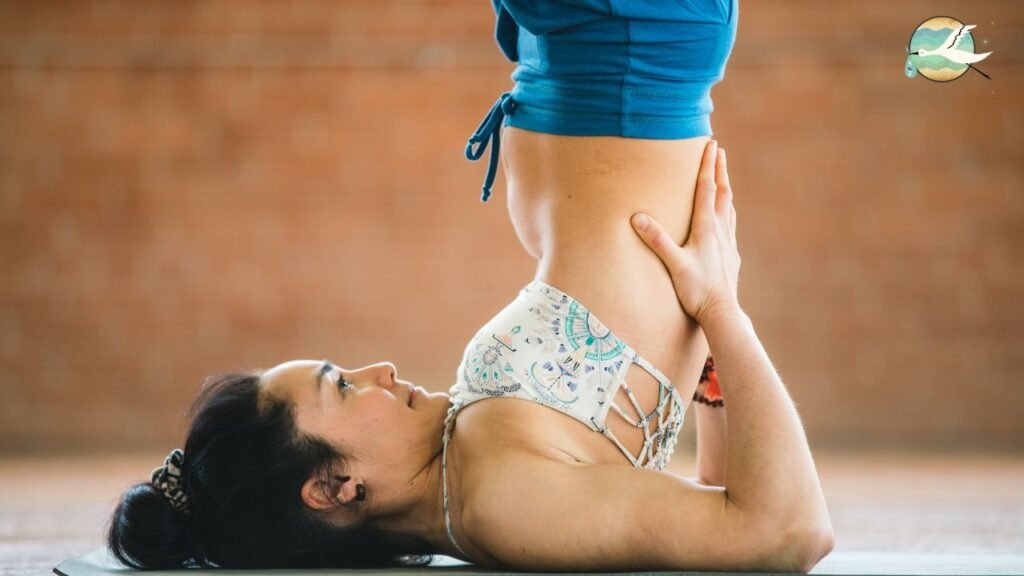
Lift your legs straight up while you are in this upside-down position, and use your hands to support your lower back. The shoulder stand improves thyroid function, blood flow to the brain, and upper body strength. Keep your neck straight to prevent any cervical strain.
7. Setu Bandhasana (Bridge Pose)
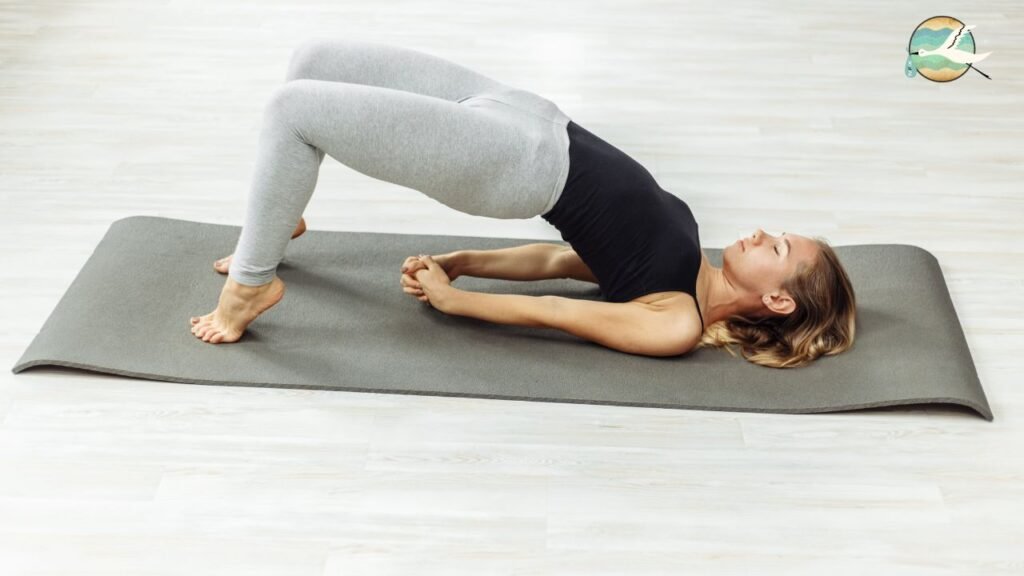
Bend your knees while lying on your back, then raise your hips. Bridge Pose strengthens the back muscles while stretching the chest, hips, and spine. Additionally, it has the ability to open the heart center and enhance posture.
8. Sarvangasana (Supported Shoulder Stand)

Similar advantages are provided by this Shoulder Stand variation, but you also have additional back support from your hands on your lower back. For those who are still developing strength or have sensitive necks, it may be a gentler option.
9. Baddha Konasana (Butterfly Pose)
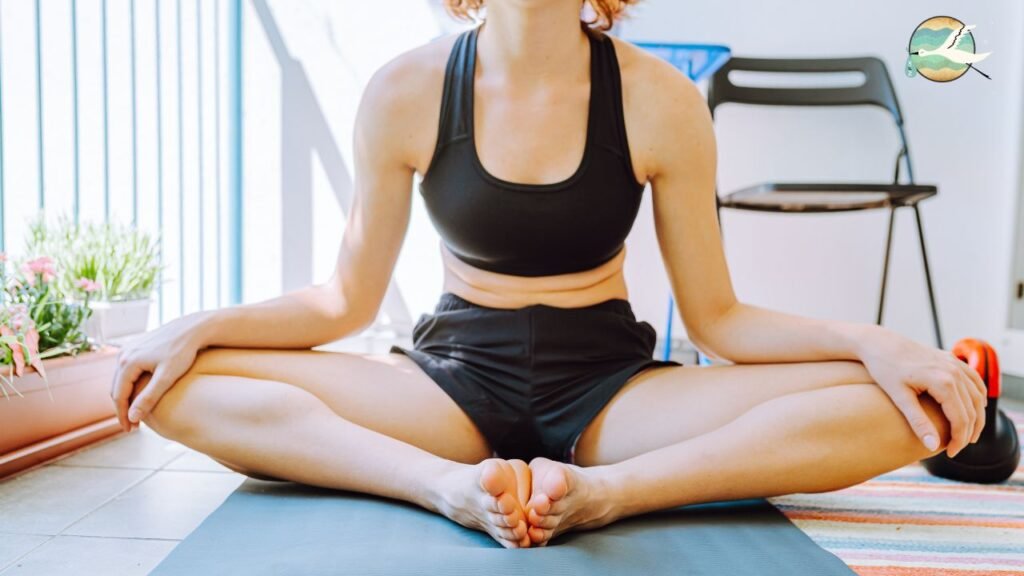
Your knees should be bent to the sides as you sit on the floor with your feet together. To prepare the hips for deeper hip-opening poses, practitioners frequently start with this pose, which stretches the inner thighs and groin.
10. Balasana (Child’s Pose)

Put your hands on your big toes and sit back on your heels while kneeling on the ground. Your forehead should be on the ground as you extend your arms forward. In addition to offering comfort and relaxation, Child’s Pose is a resting position that gently stretches the hips, thighs, and spine.
It’s important to remember that yoga, while it may have some advantages for fertility, is not a surefire fix. It’s advised to speak with a healthcare provider before beginning any new exercise program if you’re actively trying to get pregnant. Practice these poses gently and within your comfort level, keeping in mind your body’s limitations.
Conclusion: Yoga Poses to Boost Fertility
The importance of approaching this subject with realistic expectations cannot be overstated, despite the fact that a growing body of anecdotal evidence and preliminary research points to a positive correlation between yoga and fertility. Instead of being thought of as a stand-alone treatment for infertility, yoga should be seen as an addition to standard medical treatments. Stress reduction, hormonal balance, improved blood circulation, bolstered pelvic floor strength, and the development of a blissful mind-body connection are just a few of its potential advantages.
Yoga instructors with the appropriate certifications should be consulted by individuals and couples who are considering yoga as a part of their fertility journey. The strategy must be customized to take into account each person’s unique medical background, requirements, and preferences. Yoga, with its roots in its holistic philosophy, has the potential to promote an environment that is favorable for conception. But it’s crucial to keep a broad perspective and incorporate yoga into a comprehensive fertility enhancement plan.
Related Post:
- What Fertility Treatment is Best for PCOS?
- Does Female Masturbation Increase Fertility?
- Are Painful Periods a Sign of Good Fertility?
- What Happens If a Man Releases Sperm Daily?
- How to Protect Fertility? Expert Tips for Long-term Reproductive Health 2023
Frequently Asked Questions about Yoga Poses to Boost Fertility
Q. Can yoga boost fertility?
While there isn’t enough data to draw a firm conclusion, some studies imply that yoga may Boost fertility by lowering stress, promoting hormonal balance, enhancing the mind-body connection, and improving blood circulation.
Q. How does stress affect fertility?
High levels of stress can mess with your hormones, which could affect your ovulation and sperm production. The techniques for relaxation found in yoga may lessen the effects of stress on fertility.
Q. Can yoga regulate hormones?
The endocrine system is thought to be stimulated by specific yoga postures and techniques, which may help to maintain hormonal balance that is vital for reproductive health.
Q. What is the connection between yoga and blood circulation?
Some yoga poses improve blood flow, which is beneficial for fertility because it makes sure the reproductive organs get enough oxygen and nutrients.
Q. Can yoga improve flexibility and pelvic health for fertility?
Although yoga may not always directly affect fertility, its emphasis on flexibility and pelvic floor strength can support a healthy reproductive environment.
Q. Is yoga a standalone solution for fertility issues?
Yoga can be a beneficial complementary practice, but there are many different things that can affect fertility. For specific advice, it is advised to speak with a fertility specialist.
Q. How does the mind-body connection affect fertility?
Yoga’s focus on the mind-body connection can help people develop a positive outlook and general well-being, which may help with fertility inadvertently.
Q. Should I consult a healthcare professional before using yoga for fertility?
Yes, before including yoga in your fertility support strategy, it is advisable to speak with a healthcare provider, especially a fertility specialist.
Q. Can yoga help with specific fertility conditions?
However, each person’s response will be unique. Yoga may help with some fertility issues. Specialized advice can be obtained by consulting a specialist.
Q. How often and how long should I practice yoga for potential fertility benefits?
The quantity and length of yoga sessions for fertility can change. It might be advantageous, to begin with a small number of sessions per week and then gradually increase. A yoga instructor can offer direction.

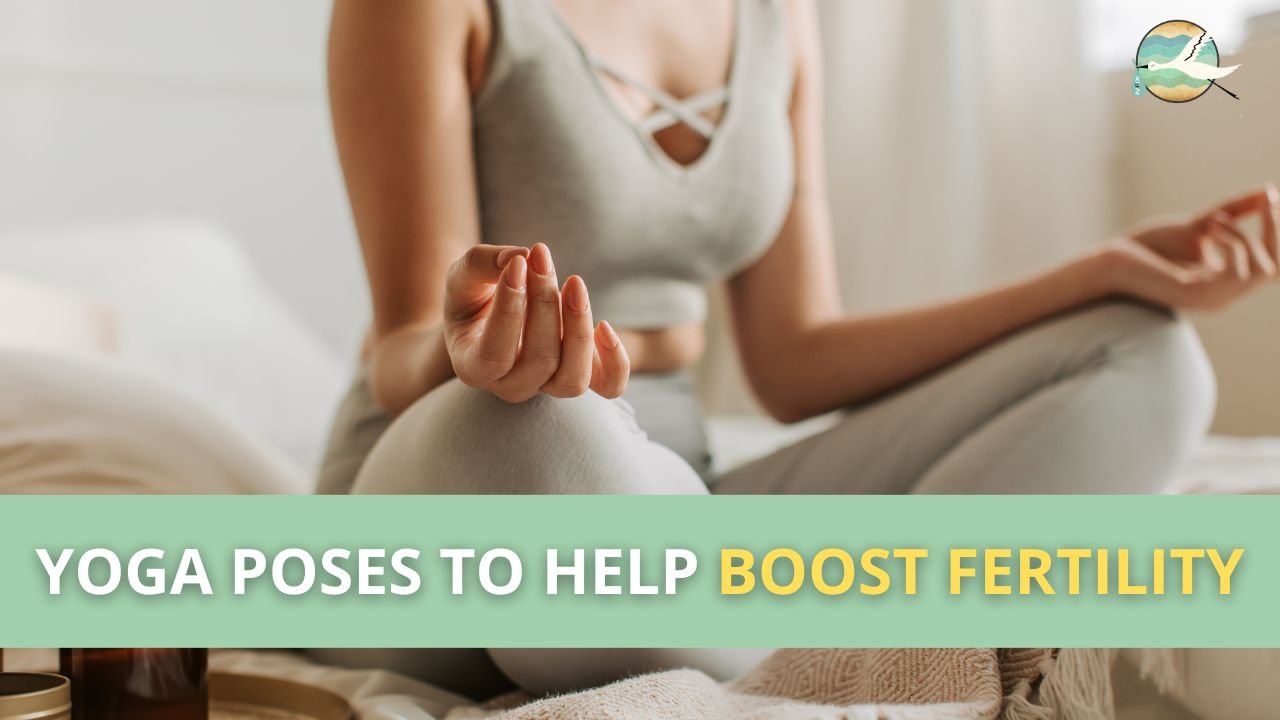




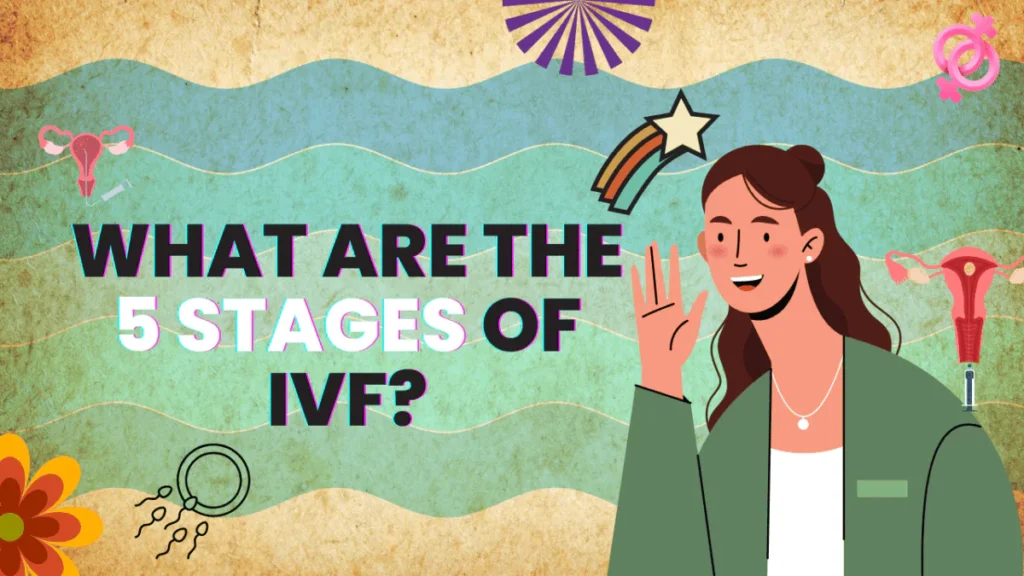



[…] a variety of issues, one of which is the function of metformin in improving fertility. But does it boost fertility? Let’s dig deeper into this subject and look at the probable links, benefits, and […]